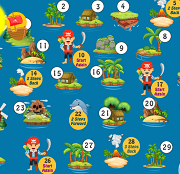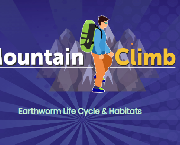Game to Practice How the Human Digestive System Works
You can practice identifying and describing the functions of each part of the human digestive tract. This science game helps children identify the different parts of the human digestive tract and their functions.
Complex biomolecules are broken down in food by the body's digestive system. These organs are located in the mouth and the intestines. Each organ has multiple layers of muscle, salivary and special enzymes that aid in the digestion and processing of food. This game examines the various organs of the digestive tract.
The main route through which food enters our bodies is the mouth. The mouth is not only a gateway but also stores food until it's digested. The salivary glands make saliva as soon as the digestive process starts. This saliva contains enzymes that help break down carbohydrates, fats, and proteins in the mouth. The mouth is where digestion begins, and not the stomach. The stomach and mouth are connected by ducts that travel through the esophagus. This is the first section of the small intestinale.
The small intestine is responsible for breaking down food into smaller molecules, which are then absorbed by blood. The anus is responsible for removing waste products and water from the large intestine. Each of the three parts of the large intestine is approximately three to four inches wide. The upper portion of the small intestine houses the spleen, and the ileum. The entire digestive tract would measure five feet if it were unwound.
There are many organs that make up the digestive system. You can create a model of your digestive system using food, tights and a hat. Digestive function is to break down food molecules into smaller, more soluble forms. The saliva contains amylase which aids in the digestion process. The next step is the passage of the feces through the anus to the toilet.
There are a number of organs in the digestive system that break down food into smaller parts. The stomach, gallbladder and pancreas are just a few of the organs that help to break down food into smaller components. Each of these organs help to digest food. It's therefore important to understand how your digestive system functions. Understanding how your digestive system works will help you take better care of yourself and your family. It is important to have a good understanding of the human body. It is best to experience it firsthand or to practice science using our activities.
Chewing is the first stage in the digestive system. Chewing is the first stage of the digestive system. It helps break down food into smaller pieces that are easier to digest. It is not just water, saliva also contains enzymes that help in starch food digestion. Additionally, saliva contains enzymes that regulate the time of defecation. Regular defecation prevents the buildup of indigestible substances in the body.











